The best things in life are free, so they say. A swarm of bees definitely fits in this category. But after catching a swarm of bees, what should a beekeeper do to keep it?
Package bees cost over $100, so it would be nice if you could avoid that cost altogether. If the swarm is kind, it will settle on a branch or a mailbox that you can access, giving you a chance to keep the swarm for yourself.
Other bees may choose to settle at the top of a 20-foot tree. Short of telekinesis, it’s virtually impossible to collect that bee swarm.
Your first lesson is to know which ones to capture and which ones to ‘tearfully’ let go of. Here, we’ll dive into what you need to do next after catching a swarm of bees.
What’s Next After Catching a Swarm of Bees?
In beekeeping, it is always better to have more than one colony. Many beekeepers add a colony to their apiary by setting up bait hives or swarm traps. A bait hive or swarm trap is set up to catch bees during a swarming activity.
Some hobbyist beekeepers resort to using swarm traps as a means of saving money (instead of buying bees) to add a new hive to their apiary. But after catching swarms, what’s next?
Here are 4 things to do after catching a swarm of bees.
1. Get the Swarm Into Some Type of Container
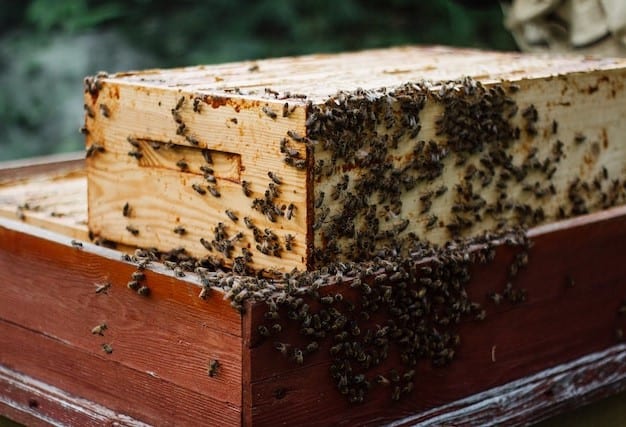
What do you do when nature buzz wraps a present right in your own apiary?
You need to get the swarm ball into a container. It could be a cardboard box, a bucket, a nucleus (known commonly as a nuc), or even an existing hive.
The container you choose will depend on the location of the swarm and how far you need to move it.
Getting the swarm into the container isn’t complicated.
Swarms Located on a Shrub
Before anything else, first things first. Suit up and stay safe from bee stings.
Back to business…
If a swarm located on a shrub, you can simply cut off the branch holding the swarm and place it inside the container. If you are using a hive, place the branch on top of the frames and allow the bees to move into the hive voluntarily.
It is said that this makes them feel like they have chosen the hive of their own free will, reducing the risk that these bees will abscond. You have fewer bees flying up and away, so it is gentler on the bees.
Swarms Located on Thick Branches

If they are located on a thick branch of a tree that can’t simply be snipped off, you can either scoop them up with your hands or shake the branch into the container. Make sure you get the queen in the container.
Once she’s in, the rest will dutifully follow. You don’t need to see her. She’ll be the one in the middle of the swarm, so just keep scooping.
If the bees keep going back to the branch, you know you still haven’t got the queen. You will have to keep at it until you’re sure that the queen is in the container.
Swarms Caught in The Middle of the Day
If you have done this in the middle of the day, it is advisable to leave the container as close to the spot where you found the swarm until dusk.
That’s because the swarm will have sent out scout bees, and their homing device will lead those scout bees back to the very same branch where you found the swarm (or, as I like to call them, the castle-less kingdom).
You could use a repellent such as ‘honey-b-gone’ on the tree/branch to discourage the latecomers from hanging around there and directing them into your nuc/hive/box.
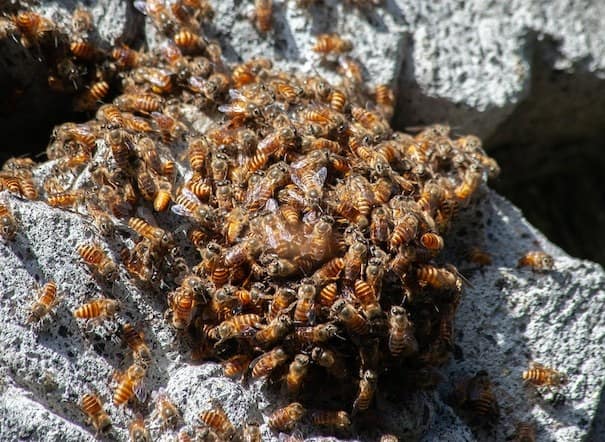
2. Move the Container or Hive to its Permanent Location
Once the sun sets, the bees hunker down for the night, making it the perfect time to relocate your new swarm. It’s always advisable to have a nuc or an empty hive at hand for the relocation.
They offer better ventilation for the bees and are easier to seal without harming your new honey bees. If you used a bucket or a cardboard box to catch the swarm, you would want to place them in nuc boxes as soon as possible.
On the other hand, if the swarm was located in a tall tree that was difficult to access, you could opt to free bees that are still at large and move the swarm immediately.
If you don’t have a spare hive, the swarm will also be happy in a nuc box (nucleus box). A nuc has all the essential components of a full-sized hive but is smaller and more manageable. Beekeepers often use nuc boxes to transport or establish new hives.
Using a nuc box can buy you some time because they’ll comfortably build comb and raise brood for several weeks before it gets cramped.
You could probably keep bee colonies in a box for a day or two, but no longer because they will start to draw comb. If you are going to limit their movements, your chosen container must allow you to feed them while you acquire a nuc or a hive.
3. The Sooner They Can Feel at Home, the Better
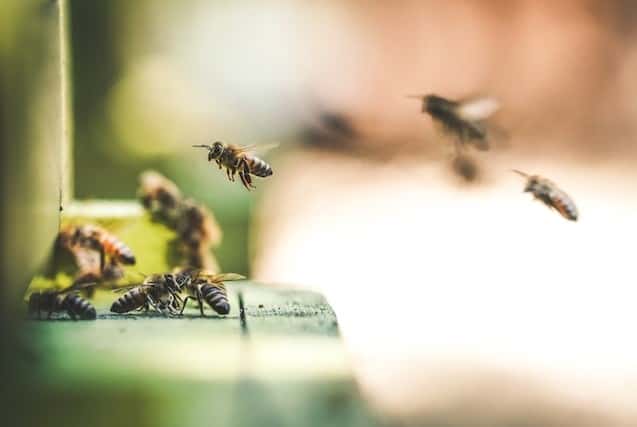
Many new bees will frequently ask how long they should wait before installing the new swarm in a hive. The answer is simple. You can do it immediately or within a few hours of swarm catching. In fact, the sooner they can feel at home, the better.
That said, bees have been known to abscond as soon as you move them, meaning you may find yourself recapturing the same swarm within a few days.
Incentivize them to stay by providing some open brood from another hive. Make sure you don’t have any nurse bees clinging on.
Just like kids, if you want them to stay put, put them to work. Their instincts to care for the young will reduce the risk of absconding.
If you don’t have any brood to spare, you may need to cover the entrance with a queen excluder. If she can’t leave, neither can her subjects.
Keep it on for a few days and observe the bees. Once you spot your worker bees bringing in pollen, it’s a safe bet that they’ve settled in.
4. Give the Newly Caught Swarm a Week or Two Until You go in and Inspect Them
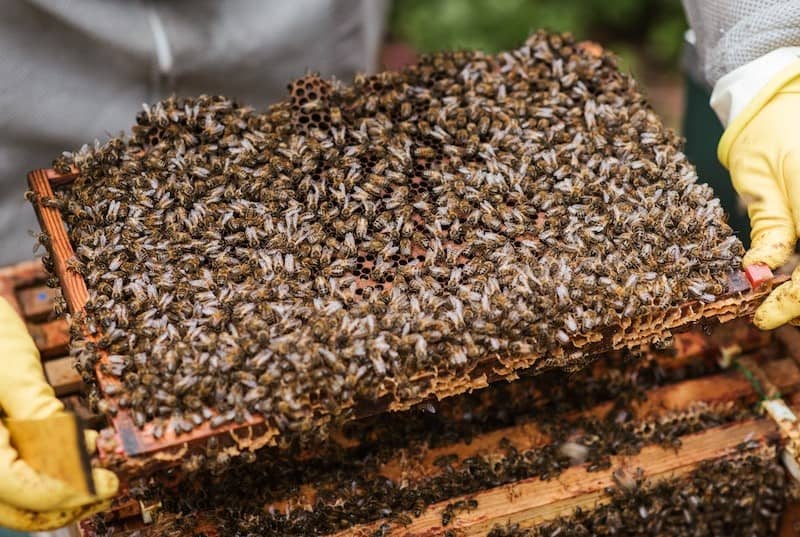
How long after you catch a swarm should you wait to go in and inspect? Give them about a week or two. Just like you, new swarms may not like the housing decision made for them and will be looking for any reason to leave.
Your overenthusiastic presence, ripping the roof off over their heads just as they are figuring out where the sofa goes, don’t encourage them to hang around.
Two weeks allow them to start building comb, and the queen bee can begin populating the new hive once again.
Final Thoughts
Capturing the swarm is the hardest part of the process. The rest is not complicated. You may have a few mishaps with your first capture, but you’ll learn and get better with every attempt.
Your local beekeeping clubs may provide some advice and assistance for new beekeepers. Don’t forget to connect with local beekeepers and the beekeeping community for advice.
When swarm season begins, make sure you have hives ready to house your guests. You never know when a swarm will come a-calling.
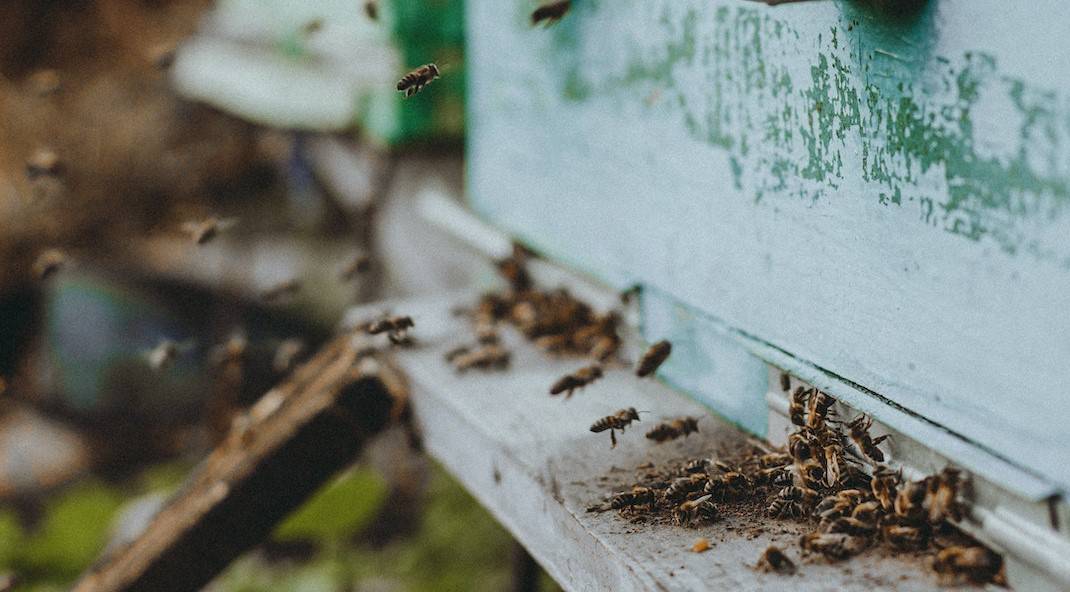
Exelent content , I’ve alread learnt alot just from this post , keep up the great work
If you collect the swarm and remove any/ QC from the original hive and add a few more frames for room, can you just put them back in the original hive the following day?
Sorry
Should you feed a swarm after 3 days?
I had a large swarm go into a hive box that I had in my yard for a month or so. it is a used hive that I had left over from a few years ago and set it up in my backyard. yesterday while in the area I could hear the buzz of a large swarm and I watch as a huge swarm as it went into the box. I did have a few drops of lemon grass oil on the landing strip. The question is this, How do I know if a queen came along with them? I do see a few Drones moving about on the entrance.
in the hive and at the entrance of the box. Is this a good thing or not?
The bees are very calm and easy to study. Not sure what my next step should be. Thank you for any help you can offer.
.
Excellent advice and great info I am very happy with information I have found and learned. Thanks again